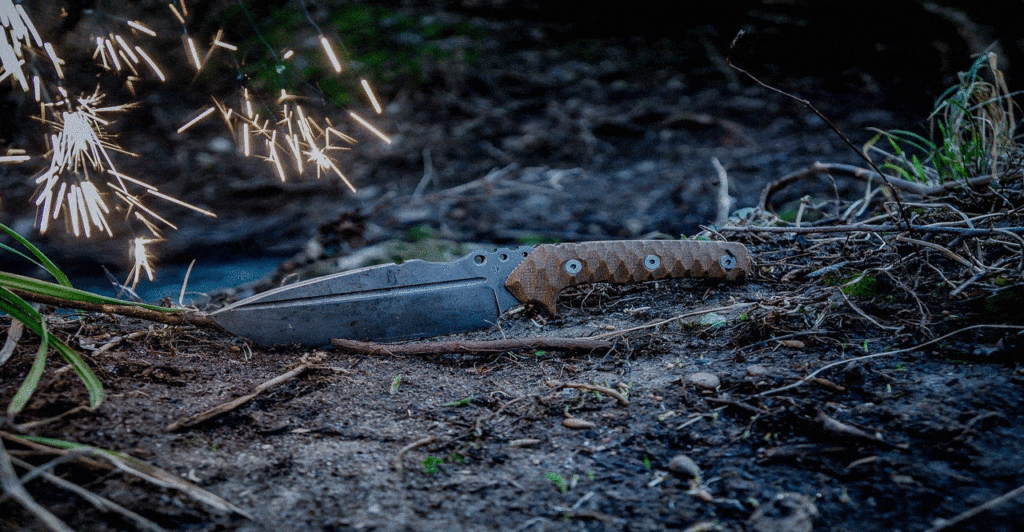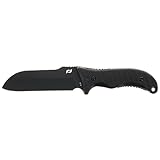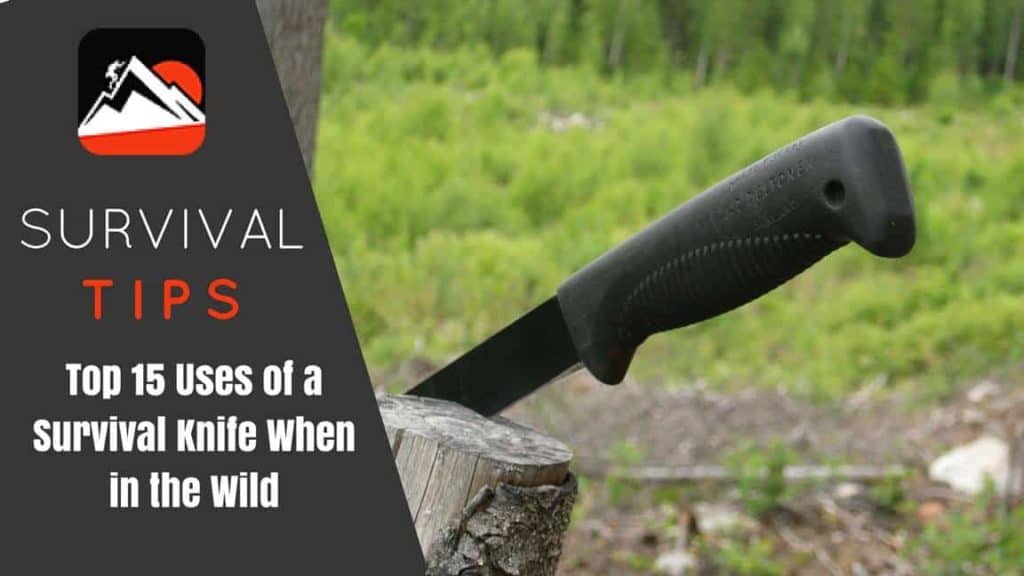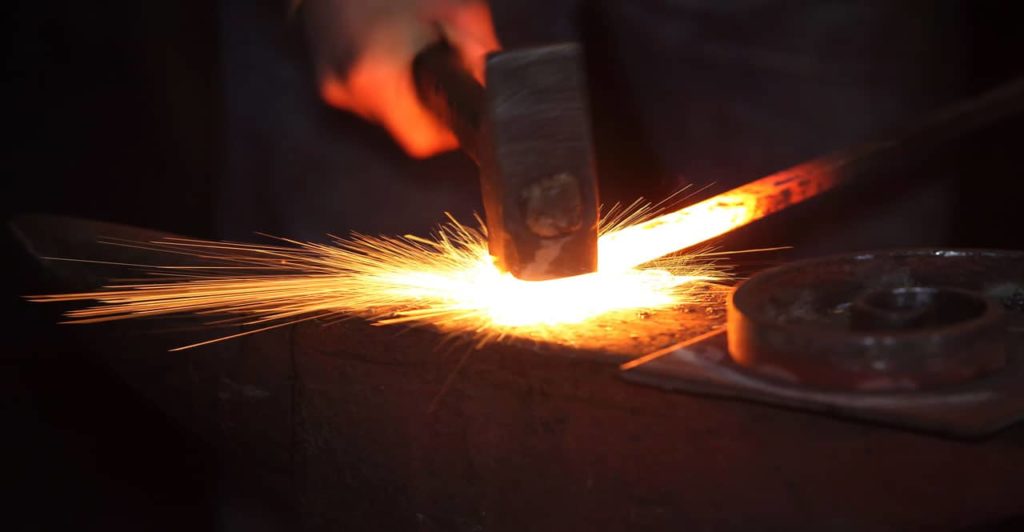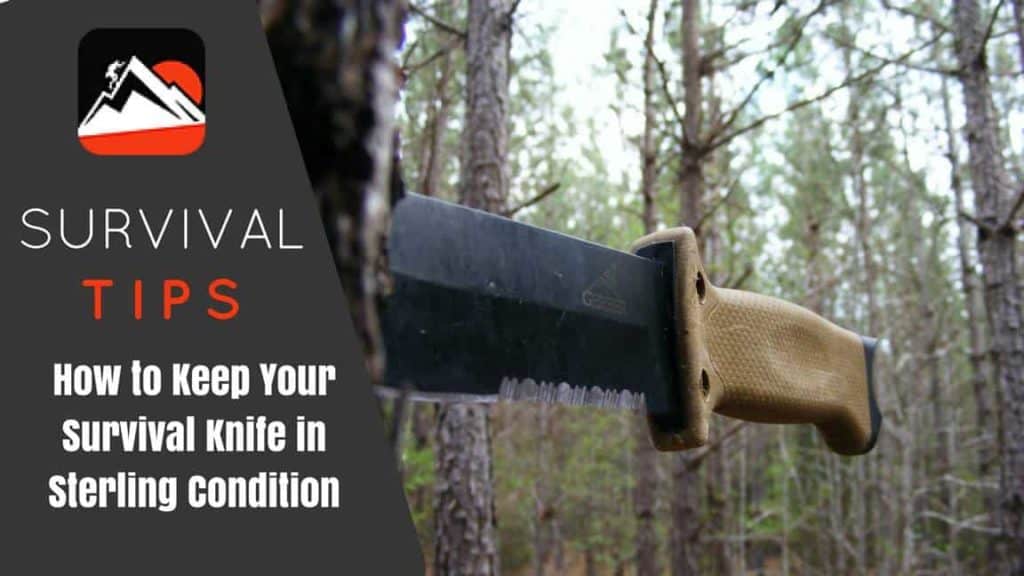Contents
No prepper kit or bug-out bag is complete without a survival knife. It is a versatile tool that can be used to open cans, clear a path, cut rope, split wood, hunt small game, skin your prey, and to defend yourself. Simply put, a survival knife is one of the few items that you simply cannot do without when a challenging situation arises.
HOW TO CHOOSE A GREAT SURVIVAL KNIFE
When it comes to choosing the best survival knife, you need to consider a wide range of factors, which we have listed below.
SIZE
This is the first thing you need to take care of when buying a survival knife. Many people, especially those who suffer from the John Rambo syndrome, tend to think that a big knife with a large blade is the best choice for survival situations. It is not necessarily true.
While a big knife can be one of the best weapons in a survival situation, you might find it difficult to carry it around. Also, if the blade is too long or too big, you might find it difficult to maneuver it while performing intricate tasks like setting up a snare trap or dressing small game.
If the folding knife is too small, on the other hand, you might not be able to use it to baton or split wood. So, ideally, your survival knife should be around 9 to 11 inches in overall length with 5 inches point blade length.
FIXED BLADE
When it comes to survival situations, a fixed blade knife is a much better choice than a folding knife. While a folding knife is ideal for every day carry, it cannot be used in a survival situation due to the fact that it has a joint, which is a weak point.
If you exert too much pressure while splitting or chopping wood, the joint might snap or break. So, make sure you choose a fixed blade knife with a full tang and 5 inches blade length when you are looking for the best survival knife.
FULL TANG
The term ‘tang’ refers to the unexposed part of the knife, which extends into the handle. In a full tang knife, the tang portion is basically an extension of the blade and extends all the way into the handle’s base.
In a partial tang knife, the tang portion does not extend fully through the overall length of the handle. In a rat-tailed or skeletonized tang knife, on the other hand, the tang portion fully extends through the handle, but is much narrower in size compared to the fixed blade.
The problem with a partial tang knife, rat-tailed tang knife, or a skeletonized tang knife is that it might snap or break at the handle if you put a lot of pressure while splitting or chopping wood. This is why a full tang is your best survival knife in any precarious situation.
BLADE MATERIAL
When it comes to knife blade material, your choices for best survival knives generally boil down to the specific type of steel material: carbon or stainless steel. Both of these have their own upsides and downsides.
Stainless steel blade is known for its exceptional durability for a fixed blade knife. It does not chip or break down easily and can take a beating. It is resistant to rust and corrosion and can be used in extreme weather conditions.
The downside is that the clip point does not retain its sharpness for long, especially compared to carbon steel. It is also difficult to sharpen – especially in the outdoors.
Carbon is very sturdy and tends to retain its sharpness for a long time in a knife. This blade material is also much easier to sharpen compared to stainless steel. It also holds an edge over stainless steel in terms of affordability. The downside is that this type of steel has a lower corrosion resistance and needs to be maintained with great care.
BLADE THICKNESS
Take care to choose the best survival knives with a thick blade that can withstand a lot of abuse. If the clip point blade is too thin, it might bend or snap right off when you apply a lot of force.
A thick fixed blade, on the other hand, can help you split, chop, and baton wood with ease. Ideally, your knife’s width or thickness should be somewhere around 3/16th to 4/16th of an inch.
BLADE DESIGN
The shape or design of the knife blade, the overall length of the knife, and the blade length are also factors that you should pay attention to while choosing a survival knife. A clip point blade is easy to maneuver and can pierce the thickest of hides with ease.
However, the slim and sharp clip point is not as strong as the rest of the blade and might break if you apply too much pressure. A drop point blade, on the other hand, has a much stronger tip and the drop point can be used for a wide range of purposes.
Similarly, a serrated blade is the best for cutting and tearing things apart, but is very difficult to sharpen. A straight edged drop point blade with an adequate blade length, on the other hand, is more functional, much easier to sharpen, and can be used for pretty much any purpose in a survival situation.
Some of the top companies may have the rights reserved on their steel blade design or shape so that manufacturer holds an edge over competition.
TIP
A sturdy survival knife with a sharp pointed steel tip and a decent fixed blade length is your best bet in a survival situation, as you can use it to hunt, skin, and gut small game, to remove splinters, to pry and pick things up, and to defend yourself from wild animals and attackers. You can also use it as a makeshift screwdriver to repair your gear.
SINGLE EDGE WITH A FLAT GROUND SPINE
The best survival knife is one which is single edged and has a thick, flat spine and a good drop point blade length. The sharp edge across the overall length of the blade can be used to cut, split, and carve things whereas the thick spine can be used to baton wood and to start a fire using a flint or ferro-rod.
SOLID POMMEL
The butt or pommel of your survival knife should be flat and sturdy, so that you can hold your survival knife upside down and pound on the pommel to drive stakes into the ground, to create a fishing hole, or to split wooden logs. If the pommel is rounded, hooked, or angular, you might find it difficult to hammer it down a hard surface. So, a flat pommel is your best choice.
HANDLE
The handle of your survival knife should be easy to grip and durable. Metal handles (made of stainless steel, aluminum, or titanium) are very durable and resistant to corrosion, but tend to be heavy.
They are also expensive. Synthetic handles (produced with carbon fiber, G-10, micarta, or kraton) are lightweight and easy to grip, but are not as durable as steel and can be expensive.
Handles created with natural materials like leather, wood, or bone are aesthetically pleasing and have an old school look, but are not as durable as their metal or synthetic counterparts.
Also, you should avoid hollow handles at all costs. The overall length of the handle portion tends to be lighter than the point blade portion, which results in an imbalance in the survival knife.
SHEATH
Buying a high-quality sheath is just as important as buying a high-quality survival knife. The last thing you want in a survival situation is for your sheath to rip apart or break, leaving your knife exposed. Leather is the best choice for sheaths, with nylon sheath could be the second-best choice. It is generally a good idea to avoid plastic sheaths – they are priced low for a reason.
You might want to also check our best bushcraft knives article.
TOP 10 SURVIVAL KNIVES
1. FALLKNIVEN A1

Fallkniven is based in Sweden and is known for making high-quality military and survival knives. It is the official supplier of survival knives for the Swedish Air Force.
The Fallkniven A1 is a heavy-duty, all-purpose survival knife which is designed to last a lifetime. The blade is made of VG10 steel, which is extremely sturdy and corrosion resistant and can be used even in the harshest of weather conditions.
The sturdy blade and the pointy tip allow you to cut, slice, carve, and pierce your way through the hardest of materials with ease. This is a full tang knife, so you do not have to worry about the knife bending or breaking apart, even when you apply a lot of pressure.
The handle is very easy to grip and has a rubbery feel to it. The weight of the blade is evenly distributed from the tip to the end of the handle, which makes it easier for you to maneuver the knife.
For survival knives, Fallkniven A1 offers two types of sheaths to choose from – leather and zytel. The zytel sheath looks and feels cheap and is not very functional. So, make sure you buy the leather sheath.
The VG10 blade tends to retain its sharpness very well, even after repeated use. However, if and when the clip point becomes blunt, you might find it difficult to sharpen it.
Pros
- (+) Made of sturdy SG10 steel
- (+) Full tang
- (+) Easy to grip handle
Cons
- (-) Zytel sheath looks cheap
- (-) Difficult to sharpen the blade
Specifications
- Steel: VG-10
- Blade Length: 6.30″
- Blade Thickness: 0.24″
- Overall Length: 11.00″
- Weight: 11.20 Oz.
2. ESEE 6P
- Overall Length: 11.75"
This is one of the best survival knives available on the market today. ESEE knives are special in the sense that they are crafted by people who are trained in the art of surviving in the wilderness. The owners – Jeff Randall and Mike Perrin – have worked with the Peruvian Air Force and are trained in the art of jungle survival.
The 6P is a full tang knife which is made of 1095 high carbon – known for its exceptional strength and durability. The 6.5” blade is razor sharp and can cut its way through anything. The micarta handle is removable and has a lanyard hole in the pommel.
A portion of the knife’s spine is serrated so that you can use it to cut and tear things open easily. The knife’s design makes it a good choice for camping, hiking, hunting, survival, self-defense, and tactical purposes.
The USP of the 6P – like all other ESEE knives – is that it comes with a lifetime repair and replacement warranty. If your knife chips or breaks, you can get it repaired or replaced free of cost.
The best part is that you can get your survival knife repaired or replaced without having to produce any proof of purchase. So, you do not have to worry about misplacing or losing the receipt.
The blade is made of high carbon, which means it is susceptible to rust. You need to clean it and lubricate it regularly. The handle also tends to accumulate dirt and grime quite fast. So, you need to clean it regularly as well.
Pros
- (+) Razor-sharp blade
- (+) Made of durable high carbon steel
- (+) Can be used for multiple purposes
- (+) Lifetime repair and replacement warranty
Cons
- (-) The blade is susceptible to rust and stain
- (-) Handle accumulates dirt and grime easily
Specifications
- Steel: 1095
- Blade Length: 6.50″
- Blade Thickness: 0.19″
- Overall Length: 11.75″
- Weight: 11.80 oz
3. KA-BAR BECKER BK22
- 5.25" High carbon steel blade with matt black coating
The Becker Companion is a beast of a survival knife in every sense of the word. The blade is 5.25” in length and is made of 1095 Cro-Van steel.
The single-edge, fixed-blade, drop point design allows you to use the knife for a variety of purposes – from chopping onions to hunting, dressing, stripping, and gutting game, cutting rope, and splitting wood. It is also a great tool for tactical and self-defense purposes.
The Becker Companion is a full tang knife. It is 0.25” thick and the weight is distributed evenly along the blade and the tang portions. So, you can chop and baton wood to your heart’s content without worrying about breaking your knife.
The handle is made of zytel and is easy to grip. You can use the flat pommel to hammer the knife down hard surfaces. The knife comes with a MOLLE compatible sheath which is made of heavy-duty polyester.
The survival knife weighs 1 lb and can be hard to maneuver, especially if you are not used to handling survival knives.
The blade is too thick to be used for intricate tasks. It is also hard to sharpen, especially when you are out in the field. The coating on the blade is rather thick, so you might find it difficult to strike a ferro rod and start a fire.
Pros
- (+) Very sturdy
- (+) Multi-purpose knife
- (+) Can withstand harsh conditions
- (+) Retains the edge even after repeated use
Cons
- (-) Heavy
- (-) The blade is too thick to be used for delicate cutting tasks
- (-) Difficult to sharpen
Specifications
- Steel: 1095 Cro-Van
- Blade Length: 5.25″
- Blade Thickness: 0.26″
- Overall Length: 10.75″
- Weight: 15.90 oz
4. MORAKNIV GARBERG
- FULL-TANG KNIFE: Constructed from high-quality, rugged materials, this fixed-blade knife is the most robust model we offer and makes an ideal bushcraft knife, backpacking knife, camping knife, and hiking knife
Morakniv is a name which is familiar to survival knife enthusiasts around the world. The Swedish firm has been making tactical and survival knives for well over a century now and is known for its attention to detail and high quality.
The Garberg is a full tang knife with a fixed blade. It is 4.3” in length and is made of 14C28N Sandvik stainless steel which is hard, durable, and resistant to rust and corrosion. The spine of the blade is square edged and can be used to strike a ferro rod and start a fire.
The blade is solidly made and you can use it for all sorts of outdoor activities without worrying about chipping or breaking it. The sheath comes with a MOLLE multi-mount system which allows you to attach the survival knife to your belt, backpack, or vehicle.
The Garberg is not intricately designed, but looks very appealing and has a tactical feel to it. It does not feel very heavy and is easy to maneuver.
The knife’s handle is very hard and feels uncomfortable when you hold it for the first time. While you get used to it after a while, you do not get a ‘locked in’ feeling that you get with other knives like the Becker Companion or the ESEE 6P.
The blade of the knife is 4.3” in length, which is slightly shorter than the average survival knives.
Pros
- (+) Made of high-quality steel
- (+) Rust, stain, and corrosion resistant
- (+) Very sharp edge and pointed tip
- (+) Can be used to start a fire
- (+) Comes with an easy-to-attach sheath
Cons
- (-) Short blade
- (-) Handle is slightly uncomfortable to grip
Specifications
- Steel: 114C28N
- Blade Length: 4.25″
- Blade Thickness: 0.12″
- Overall Length: 9.00″
- Weight: 5.98 oz
Learn more about the best survival machetes by clicking here.
5. GERBER LMF II SURVIVAL KNIFE
- QUALITY CRAFTED: Features a partially serrated fixed blade that doubles as a pommel, lashing holes for use as a spear, low-profile sheath with built-in sharpener and leg straps, and lanyard hole
This is a tactical knife in every sense of the word. It was designed for special ops – particularly for the purpose of freeing people from a downed aircraft. The blade is 4.84” long and is made of 420HC stainless steel. The easy-to-grip handle is made of glass filled nylon with TPV overmold.
The USP of the knife is its exceptionally strong blade, which is can cut through an aircraft’s fuselage. The knife weighs nearly 12 ounces and is solidly built. It cuts through rope and tent fabric like a hot knife through butter. It also chops wood like a beast.
The handle of these survival knives is very sturdy and can be used as a makeshift hammer. The base of the handle can be used to break glass in case of an emergency. There are holes in the handle that can be used as lashing points in case you need to convert your knife into a hunting spear.
The sheath deserves a special mention here. It is made of ballistic nylon and has a fire retardant coating. It holds the knife firmly in place when you are on the move.
It comes with MOLLE straps and can be comfortably attached to your belt, vest, or backpack. There is a built-in sharpener, using which you can sharpen your knife as and when you need.
The LMF II is a partial tang knife. The blade only extends up to 3/4th of the handle’s length. The space between the tang and the rest of the handle is meant to serve as insulation, in case you have to cut through a live wire.
Pros
- (+) A solid blade that can cut through virtually anything
- (+) Can be used for multiple purposes
- (+) Comes with a built-in sharpener
Cons
- (-) Partial tang survival knife
- (-) Snap closure makes it difficult to draw the knife from the sheath
Specifications
- Steel: 420
- Blade Length: 4.84″
- Blade Thickness: N/A
- Overall Length: 10.59″
- Weight: 11.67 oz
6. KA-BAR US MARINE CORPS KNIFE
KA-BAR is one of the most reputable knife makers in the world today. The company has been making knives for well over a century and remains the preferred choice of many preppers and survivalists around the world.
The fixed-edge blade is 7” in length and is made of 1095 Cro-Van steel. The razor-sharp edge allows you to cut things with ease. The leather-washer handle provides an excellent grip even when your hands are wet. The pointy tip allows you to pierce, pry, and pick up things effortlessly. The protective sheath is made of high-quality leather and is designed last long.
The knife was issued to the US Marine Corps during World War II and it still remains the favorite choice of many men and women in the US military. The letters USMC are engraved upon the blade as well as the sheath. So, these survival knives can be a great gift for a veteran.
The most notable downside of the KA-BAR US Marine Corps knife is that it has a rat-tailed tang.
While it runs all the way into the handle, it is considerably smaller and narrower in size compared to the blade portion, which creates a major weak spot. So, it cannot be used to chop or baton wood. If you do, these survival knives could snap at the handle.
Pros
- (+) Sturdy blade with 1095 Cro-Van steel
- (+) Excellent for combat and tactical purposes
- (+) Makes a great gift for collectors and veterans
- (+) Comes with a durable leather sheath
Cons
- (-) Rat tailed tang
- (-) Cannot be used for chopping or batoning wood
Specifications
- Steel: 1095 Cro-Van
- Blade Length: 7.00″
- Blade Thickness: 0.16″
- Overall Length: 12.00″
- Weight: 10.23 oz
7. SCHRADE SCHF9 EXTREME SURVIVAL
- DIMENSIONS: Blade length: 6.4in (16.3cm), overall length: 12.1in (30.7cm), weight: 15.7oz
This is a heavy-duty, full tang knife which is designed for outdoor enthusiasts and preppers. It boasts of a 6.4” blade which is made of 1095 high carbon. The ring textured handle is made of thermoplastic elastomer.
The blade is solidly built and can withstand a lifetime of abuse. It is tough enough to be used for chopping and batoning and sharp enough to be used for slicing and whittling.
The use of high carbon means the blade will retain its edge longer than most other materials, but will rust if exposed to the elements. So, you need to maintain it properly.
The handle allows you to hold the survival knife any way you want – using a standard grip or a chopping grip – and still use it comfortably. Also, it is designed to absorb shock when you chop or baton wood or hammer the knife down a hard surface.
The shock absorbing nature of the handle protects the blade as well as your hands. The finger choil and the thumb jimping ensure that the knife does not slip out of your hand. The heavy ballistic nylon sheath protects your knife and keeps it firmly in place while you are on the move.
The knife is nearly a foot long and weighs 1lb, which can make it slightly difficult for you to maneuver, especially if you are not used to handling such heavy-duty knives before.
Also, if you are short and/or if you have really thin fingers, the grooves on the handle might be too large for you.
Pros
- (+) High carbon steel blade
- (+) Retains edge for long
- (+) Easy-to-grip, shock-absorbing handle
- (+) Great bushcraft knife
Cons
- (-) Too heavy to be used as an everyday carry knife
- (-) Susceptible to rust and corrosion
Specifications
- Steel: 1095
- Blade Length: 6.375″
- Blade Thickness: N/A
- Overall Length: 12.125″
- Weight: 15.90 oz
8. CONDOR BUSHLORE
- DURABILITY: The razor-sharp blade of these camp knives are made from high carbon steel, renowned for its edge retention and durability. It's suitable for tasks such as carving, feathering, and firewood processing, all while maintaining its sharp edge.
Condor is known for making knives that have a primitive look, which is something that many survivalists dig. The 4.35” blade is made of 1075 high carbon, which is sturdy and reliable. It measures 58 HRC on the Rockwell Scale, which indicates just how solidly built the blade is.
The hardwood handle is comfortable to grip and gives a traditional look to the knife. The leather sheath looks beautiful and keeps the survival knife in place at all times.
You can use the survival knife for a wide variety of purposes – cutting, carving, chopping, chiseling, prying, and batoning. The full-length tang ensures that the knife does not snap or break when you apply a lot of pressure. The high carbon metal blade retains an edge even after repeated use. If and when it does lose its edge, you can sharpen it easily.
The blade needs to be maintained carefully, as it is susceptible to rust and corrosion. You need to oil it and clean it regularly. Similarly, the wooden handle too might degrade in the long run if you do not maintain it properly. So, you need to clean it and sand it regularly.
Pros
- (+) Made of high carbon steel
- (+) Has a traditional, classical look
- (+) Full tang
- (+) Multi-purpose survival knife
Cons
- (-) The blade is slightly shorter than the average survival knife
- (-) Blade and handle require regular maintenance
Specifications
- Steel: 1075
- Blade Length: 4.25″
- Blade Thickness: N/A
- Overall Length: 9.25″
- Weight: 8.00 oz
9. ODENWOLF W-SCANDI
- HIGH-QUALITY MATERIAL - The fixed blade hunting knife with sheath is made of a single piece of strong D2 steel (60 HRC). It's known for its exceptional hardness and wear resistance. An ideal choice for full tang knives, ensuring durability in rugged environments.
The knife comes with a fixed-edge steel blade, which is known for its durability and edge retention capability. You can use it to cut, carve, and chop things your heart’s content. The rubberized handle provides a nice grip and is unlikely to slip out even if your hands are wet.
The military-grade sheath is made of nylon and hardened rubber. It is mildew resistant and keeps the knife securely in place. It also has a built-in diamond sharpener which allows you to sharpen your knife on the go. There is an emergency whistle attached to the lanyard cord.
It should be noted that this is not the heaviest or the sturdiest of survival knives you can find on the market today. It is ideally meant for light to moderate use. If you need a heavy-duty knife, you might want to check out the Schrade SCHF9 or the KA-BAR Becker Companion.
Pros
- (+) Sturdy D2 steel blade
- (+) Affordably priced
Cons
- (-) Might not be ideal for extreme situations
Specifications
- Steel: D2
- Blade Length: 4.60″
- Blade Thickness: N/A
- Overall Length: 9.5″
- Weight: 13.10 oz
10. SCHRADE SCHF36 FRONTIER
- DIMENSIONS: Blade Length 4.25” - Handle Length 5.3” - Overall Length 9.5” - Weight 20.3 oz
This is a beautifully designed bushcraft survival knife. The powder coated blade, which is made of 1095 steel high carbon, can take a beating without losing its edge. You can use it to cut, carve, pry, pierce, chop, and baton things without worrying about the tip – or any other part of the blade for that matter – chipping or breaking away.
The ring-textured handle is made of thermoplastic elastomer. The finger choil and jimping make it easier to grip the handle. Both the blade and the handle are black in color and look aesthetically appealing.
The SCHF36 Frontier comes with a built-in ferro rod, using which you can start a fire. It also comes with a sharpening stone, using which you can sharpen the blade on the go.
The SCHF36 weighs over 12 ounces, has a thick blade, and has a full-length tang, which is the ideal combination you should look for if you are in need of a heavy-duty survival knife. From starting a fire to batoning wood, you can use it for any purpose you want.
The coating on the blade might be a tad too thick for some people’s liking. It might make certain chores more difficult than they need to be. Also, the coating tends to chip off after a while.
Pros
- (+) Aesthetically pleasing design
- (+) Made of high carbon steel
- (+) Can be used for several purposes
- (+) Can be used to start a fire
- (+) Built-in sharpener
Cons
- (-) Thick coating might make it difficult to perform delicate tasks
- (-) Might be too heavy for some people
Specifications
- Steel: 1095
- Blade Length: 5.00″
- Blade Thickness: 0.23″
- Overall Length: 10.25″
- Weight: 12.82 oz
FAQ Section
HOW TO PROPERLY MAINTAIN MY SURVIVAL KNIFE?
There are many things you can do to maintain your survival knife. They include
- Using a mat or any soft material while cutting and chopping things to make sure the knife’s edge does not come into contact with hard materials
- Sharpening it regularly
- Cleaning it regularly
- Oiling it regularly (in case of a high carbon steel knife)
- Storing it in a pouch or sheath to prevent exposure to elements
HOW TO SHARPEN A SURVIVAL KNIFE?
Every time you use your survival knife to cut, carve, chop, or baton things, the blade made of tough metal tends to wear out a little. With repeated use, it tends to lose its sharpness and become dull or blunt. The purpose of sharpening is to reshape the blade and restore its edge.
You can use a wide range of tools – from sandpaper to sharpening stones, strops, and sharpening rods – to sharpen the blade of your knife.
You need to hold your survival knife at an angle (as suggested by the manufacturer) and run the blade across the surface of the sharpening tool. You should do it in such a way that the entire length of the blade comes into contact with the sharpening tool.
Depending on the material your knife is made of and how blunt the blade is, you might be able to sharpen it with a few strokes or a large number of strokes. Once you are done sharpening your knife, you need to wash it to get rid of the dust and residue and clean it thoroughly.
WHAT ARE THE MOST COMMON USES OF A SURVIVAL KNIFE?
Survival knives are known for their functionality and versatility. You can use them for a variety of different purposes including:
- To cut, slice, and dice vegetables
- To clear out a path in a jungle
- To dig up worms for bait
- To chop, split, or baton wood
- To hunt, dress, skin, and gut small game
- To start a fire
- To build a shelter in the wilderness
- To set a trap
- To defend yourself against wild animals and hostile elements
BRINGING THIS TO A CLOSE!
The 10 survival knives listed above are rated highly by outdoor enthusiasts and survivalists. If we had to choose the best among the ones listed above, we’d go with the KA-BAR Becker BK22 Companion.
It has everything you could ask for in a survival knife – an exceptionally strong full tang blade, easy-to-grip handle, versatile enough to be used for a variety of purposes, and durable enough to last you a lifetime. Simply put, if you are looking for the best survival knife, the Becker Companion should certainly meet all your criteria.
Our second and third choices for a survival knife would be the Schrade SCHF9 Extreme Survival and the ESEE 6P respectively.

